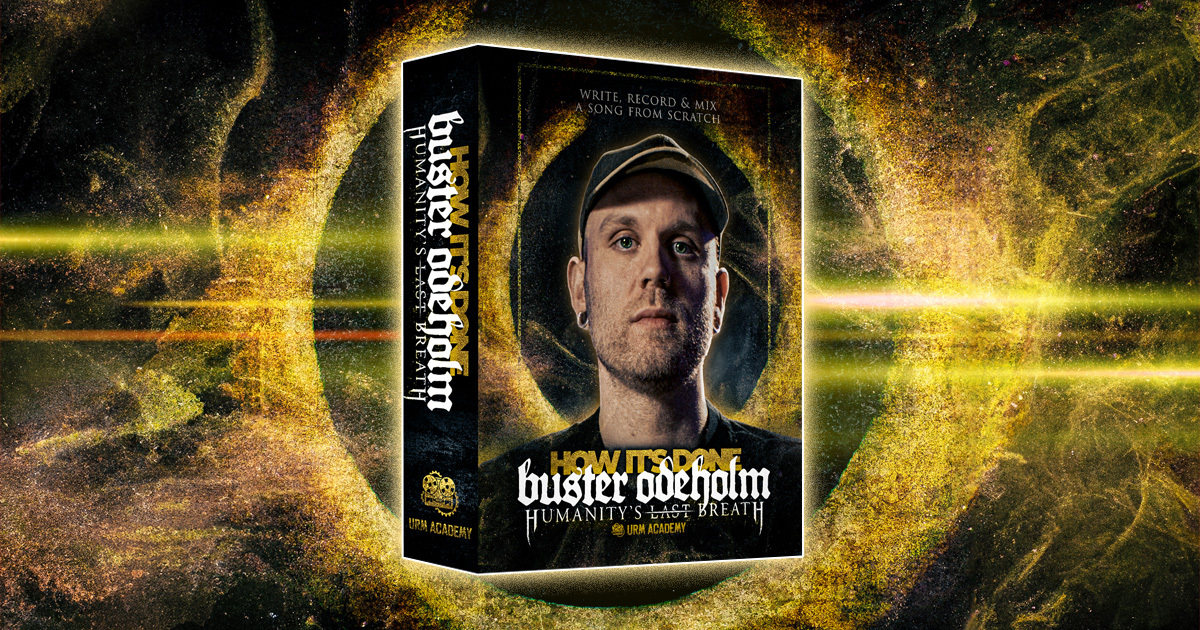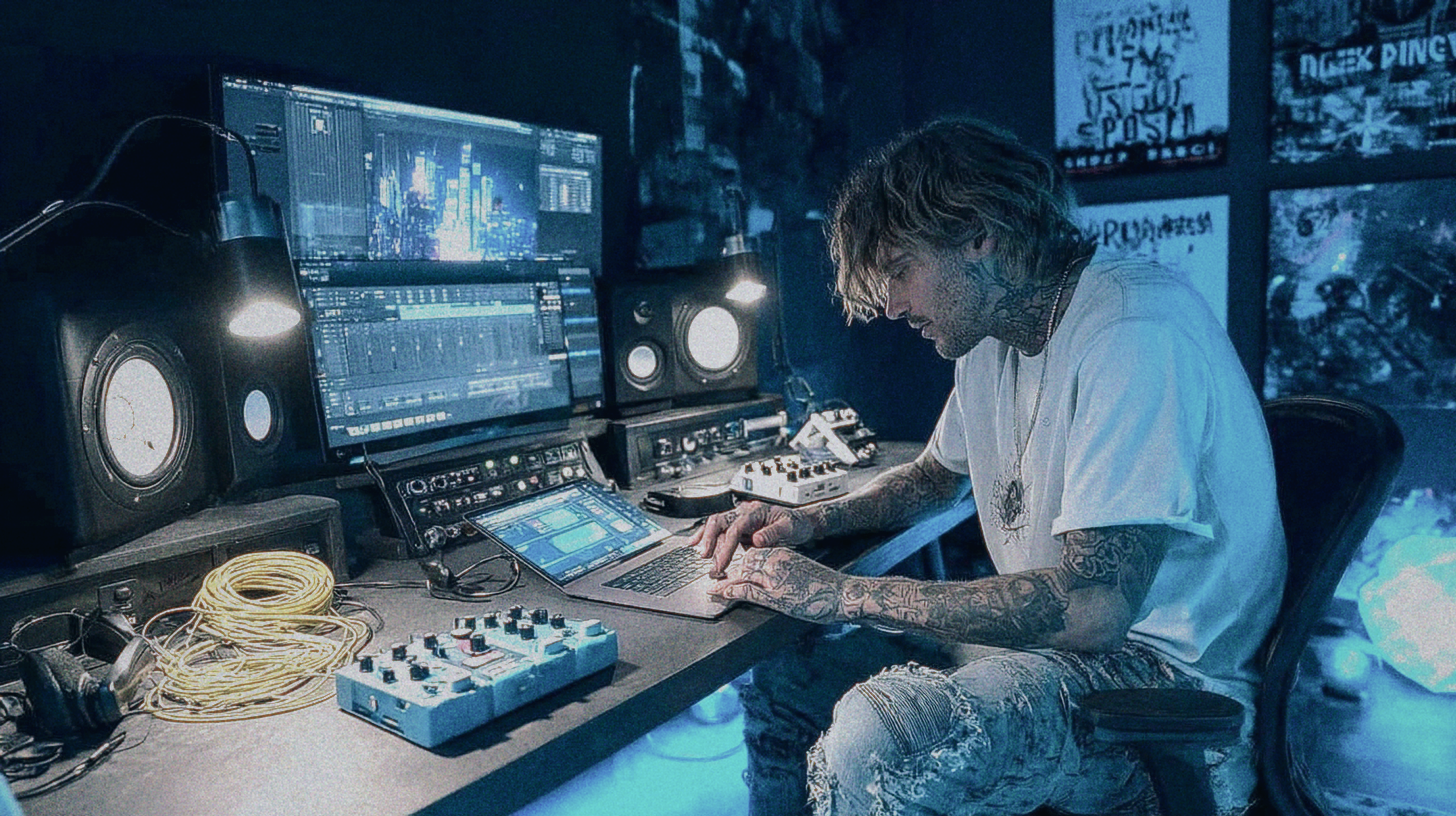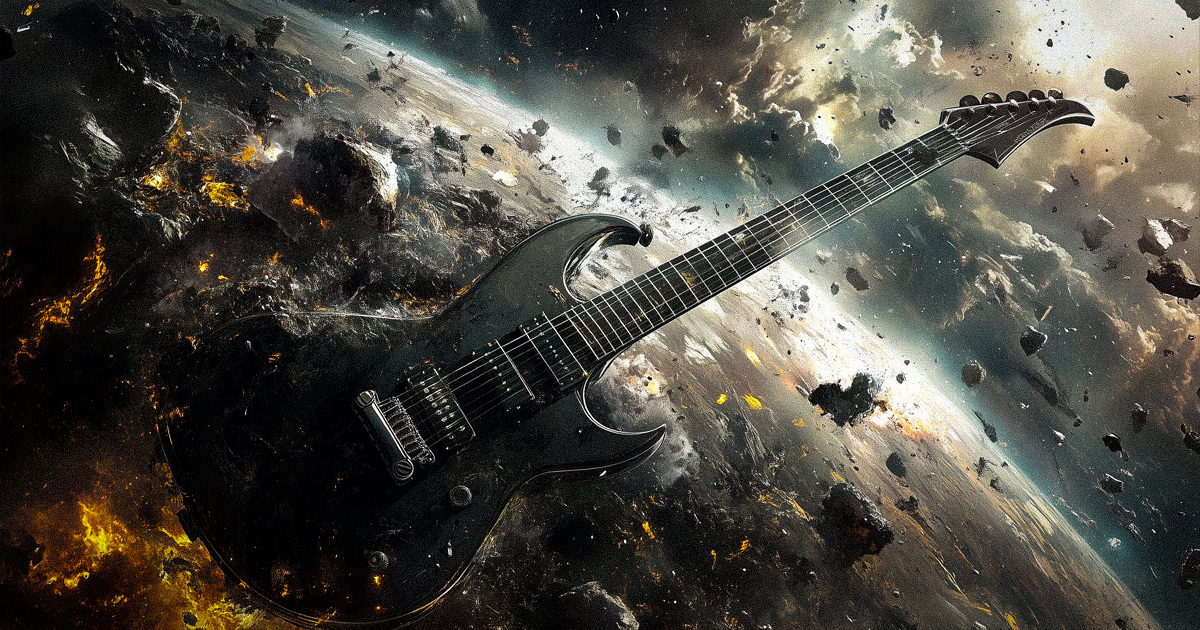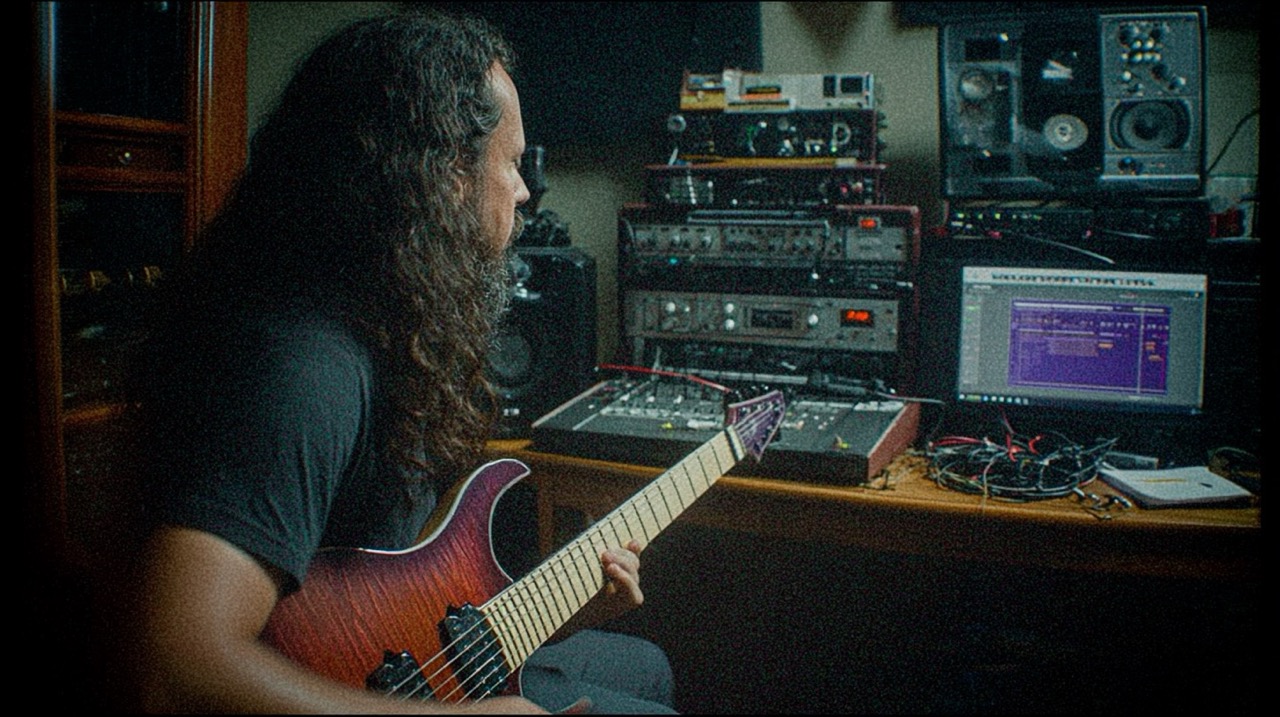
Crafting Silent Planet’s Guitar Tones with Buster Odeholm
Nail The Mix Staff
Silent Planet’s guitar work is a masterclass in modern metal: articulate, melodic, and devastatingly heavy all at once. Behind the scenes, producer and mixer Buster Odeholm (Vildhjarta, Humanity’s Last Breath) is the mastermind dialing in those tones, and his approach is a goldmine of techniques for any producer.
Forget simple amp-and-go setups. We got a look inside Buster’s actual session, and his process for shaping the tones from a 30-inch baritone Fender Jazzmaster is a multi-layered journey of parallel processing, transient shaping, and meticulous bus work. Let’s break down how he builds these massive guitar sounds from the DI up.
Building the Core Heavy Rhythm Tone
The foundation of the heavy sound starts with a good amp and cab sim, but the real character comes from what happens before the signal ever hits them.
The Parallel 808 Drive Trick
We’ve all heard of boosting a high-gain amp with a Tube Screamer. It’s a classic move to tighten the low end and add that aggressive mid-range bite. But Buster takes a more nuanced approach. Instead of running the signal 100% through a boost pedal, he uses parallel processing.
He sets up an 808-style drive plugin on a parallel path and blends it in at just 40%. The result? He gets that tight, focused mid-range push that helps the guitar cut through, but retains the full weight and natural character of the original DI signal. It’s a killer way to get the “American metal” feel—that classic boosted 5150 sound—without completely changing the core tone.
Shaping Transients for Maximum Attack
Before the amp, Buster makes two key moves to ensure every chug and riff has an insane amount of punch.
- Slow-Attack Compression: This might sound counterintuitive, but using a compressor with a slow attack and fast release lets the initial pick attack (the transient) sneak through untouched before the compressor clamps down. This makes the front end of every note more pronounced while controlling the body of the sound.
- Transient Designer: Right after the compressor, he adds a transient designer to further exaggerate that initial “slap” of the pick. Listening to the before-and-after, the riff goes from being a solid chug to a percussive, aggressive hit that feels like it’s jumping out of the speakers. This is one of the key secrets to guitar tones that sound clear and punchy in a dense mix. If you feel your guitars get lost, mastering [metal compression secrets](https://www.nailthemix.com/metal-compression-secrets-beyond-just-making-it-loud) like this is a game-changer.
Crafting a Cohesive Melodic Tone
Silent Planet is known for their melodic passages, which require a different tonal approach. For these sections, Buster uses a cleaner, less distorted amp sound—in this case, the Pliny sim from Neural DSP. But the challenge is making sure this cleaner tone sits in the mix alongside the ultra-heavy rhythm tone without sounding out of place.
The Power of Tone Matching
Here’s where a seriously pro-level technique comes in. To ensure both the heavy and melodic tones can be processed together on a bus, Buster uses a Tone Match EQ. He captures the frequency curve of the main heavy tone and applies it to the melodic tone.
This doesn’t make the melodic tone sound distorted; it just shapes its overall EQ curve to be similar to the heavy one. This ensures that when both tones are sent to the same guitar bus, any processing applied there (like more EQ or compression) will affect both tones consistently. It’s a brilliant move for creating a cohesive guitar soundscape.
Gluing It All Together on the Guitar Bus
With two distinct but tonally-matched guitar sounds, the final step is processing them together on a group bus to make them sound like a single, unified force.
Surgical EQ and Dynamic Control
The bus processing starts with some expert EQ strategies for mixing modern metal. After another tone-matching EQ for overall consistency, Buster carves out some problematic frequencies:
- Low-Mid Cut: Removing muddiness to make space for the bass guitar.
- Taming Harsh Peaks: Finding specific harsh frequencies in the cab impulse and surgically cutting them.
Next, he uses a multi-band compressor (FabFilter Pro-MB) to gently control the mid-range, but sets the crossover to skip the low end. This lets the “chug” and palm-muted notes bloom naturally while keeping the more aggressive mids in check.
Making Room with Sidechain Compression
To ensure the kick drum punches through the wall of guitars, Buster uses a classic modern metal trick: kick sidechain compression. He sets up a compressor on the guitar bus that’s triggered by the kick drum.
With every kick hit, the guitars are ducked by about 3dB. He dials in a 64ms attack so that the kick’s initial transient cuts through cleanly before the guitars come back up. This creates space and rhythm in the mix, allowing both the kick and guitars to sound massive without fighting each other.
See Every Move in Action
Reading about these techniques—parallel drive, a “less-is-more” approach to gain, transient shaping, tone matching, and surgical bus processing—is one thing. But seeing them dialed in, in real-time, on a real session is where it all clicks. At Nail The Mix, you can watch world-class producers like Buster Odeholm mix iconic tracks from scratch.
Silent Planet on Nail The Mix
Buster Odeholm mixes "Antimatter"
Get the Session
In his full session, you can see exactly how Buster sets up his chains, what plugins he uses, and hear the A/B comparisons for every single move he makes. If you’re ready to see how the pros craft release-ready metal tones, check out Buster’s full NTM session for Silent Planet & Vildhjarta.
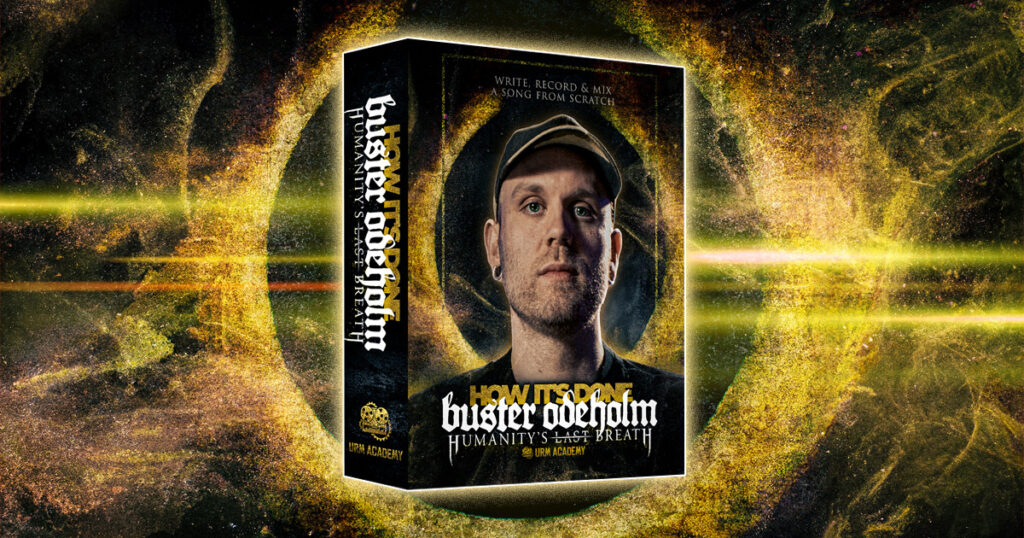 And for those who want to dive really deep, get Buster’s course “How It’s Done.”
And for those who want to dive really deep, get Buster’s course “How It’s Done.”
Get a new set of multi-tracks every month from a world-class artist, a livestream with the producer who mixed it, 100+ tutorials, our exclusive plugins and more
Get Started for $1
